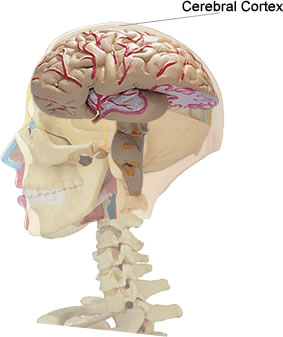
The theory of multiple intelligences proposes the differentiation of human intelligence into specific intelligences, rather than defining intelligence as a single, general ability. The theory has been very popular among educators around the world for 40 years despite being criticized by mainstream psychology for its lack of empirical evidence, its dependence on subjective judgement and its overall unscientific nature.

The SAT is a standardized test widely used for college admissions in the United States. Since its debut in 1926, its name and scoring have changed several times. For much of its history, it was called the Scholastic Aptitude Test and had two components, Verbal and Mathematical, each of which was scored on a range from 200 to 800. Later it was called the Scholastic Assessment Test, then the SAT I: Reasoning Test, then the SAT Reasoning Test, then simply the SAT.
Visual thinking, also called visual or spatial learning or picture thinking, is the phenomenon of thinking through visual processing. Visual thinking has been described as seeing words as a series of pictures. It is common in approximately 60–65% of the general population. "Real picture thinkers", those who use visual thinking almost to the exclusion of other kinds of thinking, make up a smaller percentage of the population. Research by child development theorist Linda Kreger Silverman suggests that less than 30% of the population strongly uses visual/spatial thinking, another 45% uses both visual/spatial thinking and thinking in the form of words, and 25% thinks exclusively in words. According to Kreger Silverman, of the 30% of the general population who use visual/spatial thinking, only a small percentage would use this style over and above all other forms of thinking, and can be said to be true "picture thinkers".
Human intelligence is the intellectual capability of humans, which is marked by complex cognitive feats and high levels of motivation and self-awareness. Using their intelligence, humans are able to learn, form concepts, understand, and apply logic and reason. Human intelligence is also thought to encompass their capacities to recognize patterns, plan, innovate, solve problems, make decisions, retain information, and use language to communicate.
The eleven-plus (11+) is a standardised examination administered to some students in England and Northern Ireland in their last year of primary education, which governs admission to grammar schools and other secondary schools which use academic selection. The name derives from the age group for secondary entry: 11–12 years.
Intellectual giftedness is an intellectual ability significantly higher than average. It is a characteristic of children, variously defined, that motivates differences in school programming. It is thought to persist as a trait into adult life, with various consequences studied in longitudinal studies of giftedness over the last century. These consequences sometimes includes stigmatizing and social exclusion. There is no generally agreed definition of giftedness for either children or adults, but most school placement decisions and most longitudinal studies over the course of individual lives have followed people with IQs in the top 2.5 percent of the population—that is, IQs above 130. Definitions of giftedness also vary across cultures.
Gifted education is a sort of education used for children who have been identified as gifted and talented.
The concepts of fluid intelligence (gf) and crystallized intelligence (gc) were introduced in 1963 by the psychologist Raymond Cattell. According to Cattell's psychometrically-based theory, general intelligence (g) is subdivided into gf and gc. Fluid intelligence is the ability to solve novel reasoning problems and is correlated with a number of important skills such as comprehension, problem-solving, and learning. Crystallized intelligence, on the other hand, involves the ability to deduce secondary relational abstractions by applying previously learned primary relational abstractions.
Cognitive tests are assessments of the cognitive capabilities of humans and other animals. Tests administered to humans include various forms of IQ tests; those administered to animals include the mirror test and the T maze test. Such testing is used in psychology and psychometrics, as well as other fields studying human and animal intelligence.
The Wechsler Intelligence Scale for Children (WISC) is an individually administered intelligence test for children between the ages of 6 and 16. The Fifth Edition is the most recent version.
Verbal reasoning is understanding and reasoning using concepts framed in words. It aims at evaluating ability to think constructively, rather than at simple fluency or vocabulary recognition.
The Secondary School Admission Test (SSAT) is an admission test administered by The Enrollment Management Association in the United States to students in grades 3–11 to provide a standardized measure that will help professionals in independent or private elementary, middle, and high schools to make decisions regarding student test taking.
The Pimsleur Language Aptitude Battery (PLAB) was developed to predict student success in foreign language learning, or language learning aptitude, and for diagnosing language learning disabilities. It is published by the Language Learning and Testing Foundation.
The Kaufman Assessment Battery for Children (KABC) is a clinical instrument for assessing cognitive development. Its construction incorporates several recent developments in both psychological theory and statistical methodology. The test was developed by Alan S. Kaufman and Nadeen L. Kaufman in 1983 and revised in 2004. The test has been translated and adopted for many countries, such as the Japanese version of the K-ABC by the Japanese psychologists Tatsuya Matsubara, Kazuhiro Fujita, Hisao Maekawa, and Toshinori Ishikuma.

The following outline is provided as an overview of and topical guide to thought (thinking):

Analytical skill is the ability to deconstruct information into smaller categories in order to draw conclusions. Analytical skill consists of categories that include logical reasoning, critical thinking, communication, research, data analysis and creativity. Analytical skill is taught in contemporary education with the intention of fostering the appropriate practises for future professions. The professions that adopt analytical skill include educational institutions, public institutions, community organisations and industry.
Cognitive skills, also called cognitive functions, cognitive abilities or cognitive capacities, are skills of the mind, as opposed to other types of skills such as motor skills. Some examples of cognitive skills are literacy, self-reflection, logical reasoning, abstract thinking, critical thinking, introspection and mental arithmetic. Cognitive skills vary in processing complexity, and can range from more fundamental processes such as perception and various memory functions, to more sophisticated processes such as decision making, problem solving and metacognition.
Spatial intelligence is an area in the theory of multiple intelligences that deals with spatial judgment and the ability to visualize with the mind's eye. It is defined by Howard Gardner as a human computational capacity that provides the ability or mental skill to solve spatial problems of navigation, visualization of objects from different angles and space, faces or scenes recognition, or to notice fine details. Gardner further explains that Spatial Intelligence could be more effective to solve problems in areas related to realistic, thing-oriented, and investigative occupations. This capability is a brain skill that is also found in people with visual impairment. As researched by Gardner, a blind person can recognize shapes in a non-visual way. The spatial reasoning of the blind person allows them to translate tactile sensations into mental calculations of length and visualizations of form.
According to Paul Muchinsky in his textbook Psychology Applied to Work, "mechanical aptitude tests require a person to recognize which mechanical principle is suggested by a test item." The underlying concepts measured by these items include sounds and heat conduction, velocity, gravity, and force.
Sex differences in human intelligence have long been a topic of debate among researchers and scholars. It is now recognized that there are no significant sex differences in average IQ, though particular subtypes of intelligence vary somewhat between sexes.



